Life, Death, & The Sefirot: FFVII’s History & Remake’s Future in a New Symbol of Reunion
by X-SOLDIER June 29, 2020 0 commentsAdditional Key Religious Terminology & Parallels in FFVII
Tif’eret & Tifa/Aerith
Tif’eret is very clearly the namesake origin of Tifa’s character, though it’s almost certainly additional inspiration for Aerith’s as well – since the game initially only originally had a single heroine with Aerith. Her death being a critical part of the story led to the creation of Tifa’s character, making this interconnection between the two of them & Tif’eret match – and making the localization correction from the original game’s “Aeris” even more important. Each of their characters are an embodiment of beauty that helps to keep Cloud in balance – Tifa with his past, Aerith with his present, & both of them with his future. (Quite the recipe for confusing love triangles, right, everyone?)
When looking at this as a shared role between Tifa & Aerith, Tifa’s role in the thematic elements with Tif’eret is the most apparent in the physical sense, and Aerith’s is in the spiritual sense. This is why in Remake, we see Tifa & Cloud interacting physically in the Chapter 14 ending variant with her specifically commenting on him hugging her too tightly, whereas Aerith & Cloud are interacting spiritually in their Chapter 14 ending variant. This is connected to why we see both Tifa & Aerith playing cooperative roles in stabilizing Cloud emotionally in the events of Advent Children. They balance his sense of Judgement & Grace towards himself in order to ultimately resolve his story and how he copes with death emotionally, so that he & Tifa can exist in the physical world, while Zack & Aerith can remain in his memories.
However, Aerith’s path in the game’s story is more clearly defined as a balanced parallel with Cloud’s in Malkhut, whereas Tifa has a far more specifically important role in providing a balance between the emotions of the Giver AND of the Receiver. Not only is Tifa a source of compassionate support for Cloud, she is frequently demonstrated as being a support of compassionate strength for Aerith. There is a much greater emphasis on this side of Tifa’s relationship with Aerith in Remake as well, which helps to provide a lot of clarity for these themes, and give us more detail to analyze when looking at the story’s structure.
Just as much as Tifa’s childhood history in Nibelheim connects her to Cloud’s past, her knowledge of the truth of the events during the Nibelheim Incident connects her to Aerith’s past as well. She and Aerith both know things about Zack that Aerith literally can’t confide in Cloud despite their connection – he just mentally glitches out when Aerith even just says the name, “Zack” to him in Remake. Tifa also has a place to be able to understand Zack’s connection to both of them in a way that Cloud & Aerith will each significantly struggle with emotionally. Zack’s death is a point of immense grief both for Aerith & for Cloud. The connections with Zack are emphasized especially heavily with Remake‘s ending, and is going to be explored in even more detail going forward. This very complicated relationship between Sephiroth, Aerith, Cloud, Zack, & Tifa is a result of how the writers developed the story for Final Fantasy VII. This is why with the role of the Sefirot understood as it applies to the Planet’s “natural cycle of life & death” vs. Jenova’s “supernatural physical Reunion” we’re able to use just those five characters to examine these central concepts in Remake.
The Ancients
At the Shinra HQ, Remake presents a holographic explanation about the planet like Bugenhagen gives in the original game, but this one is all about the Ancients. It contains this new particular quotation of their scripture which will come back quite a bit, “We who are born of the planet, with her we speak. Her flesh we shape. Unto her promised land shall we one day return. By her loving grace and providence may we take our place in paradise.”
That passage describes the Cetra’s ability to speak with the Planet, as well as to shape the Planet with the energy of the Lifestream, itself according to their own will. We know from the rules that Final Fantasy VII follows with the Sefirot, that having a unified balance in nature, the souls, and the divine would manifest as “Da’at” (knowledge). This would allow the Cetra to actually speak with the Planet & with the dead, and not just be limited to hearing its emotional cries. This state would also grant them a conscious awareness of the superconscious spirit-energy-based existence of material reality – which is how they discovered the Lifestream. Additionally, Da’at is the where the Divine Light of Creation shines, which is how the Cetra were able to shape the Planet’s energy into physical forms like Materia according to their own will. All of those things are definitively explained just by them being in a state of harmonious balance with the Planet – all by knowing Final Fantasy VII‘s rules of the spiritual concepts of the Sefirot.
The Cetra as Ancients are very similar to the concept of God’s chosen people, having the ability to speak with him & gain knowledge of creation, and are destined to reach a place known as the Promised Land being recorded in ancient scriptures. Additionally, when that balance is lost between God & his creation, the Biblical stories result in cataclysms with only the few surviving numbers of those faithful left remaining, while those who fall to temptation are cast out or killed. In the real world, roughly 2000 years ago also the end of the Old Testament & start of the New Testament. This is exactly what we see in the records about Jenova’s original arrival wiping out the Ancients’ civilization 2000 years ago, and everything since then being in a different time where there is no state of harmony with the Planet. Thus, Aerith being the last living (half) Cetra is thematically representing the world in Final Fantasy VII being on the cusp of the end times, which also matches the setting we’ve seen thematically established in all of David Bowie’s inspirational media as well, lining up with the emphasis on environmental protection in the 1970s.
This “Calamity from the Skies” is especially important because we know that this initial event could only occur if the Black Materia was used. In Kabbalah, since Malkhut is the only Sefirah that is a mortal aspect of God’s creation, rather than a direct trait of the Divine itself, its energy also flows into the opposite of the Sefirot – the Qliphoth which is also known as the Tree of Death. While concepts like Geostigma’s dead, stagnant, & negative Lifestream have been touched on briefly in the Compilation, it’s not entirely clear how that interpretation between the interactions of Jenova & the Planet will be portrayed in Remake quite yet, though it’s likely a natural part of the end cycle related to Jenova’s virus, meant to collect the Lifestream into itself to bring death to the whole Planet. The critical point is that the energy in Malkhut flows down into the Qliphoth and back up into the Sefirot – which is the cycle of Life & Death in the Lifestream that is true for all things in Final Fantasy VII‘s entire universe.
This is why in Remake, the Whispers can guide, inform, and influence actions & outcomes according to the Will of the Planet – but it doesn’t have the ability to stop Sephiroth on its own – only try to push the humans towards the path to Destiny. Also, this is why Jenova’s Reunion is calling to her cells to reform, so that she can drain the Lifestream from this world and move on to another one. Both of the planetary cosmic entities are bound by the same rules as the Abrahamic God being omniscient & omnipotent, but Man still having free will – Malkhut. As strange and new as these elements of Destiny may initially seem, they are 100% in line with the core foundational elements of the original framework for Final Fantasy VII‘s story – it’s about the Planet trying to give humanity the answer about reunion in the Promised Land being a personal emotional salvation found within themselves, opposed by Jenova’s literal physical Reunion – and those two forces being trapped in a stalemate for 2000 years.
Jehovah & Jenova
The Tetragrammaton are the four letters that make up the name of God in the Jewish language, YHWH. One pronunciation used was originally thought to be “Jehovah” but since the 1800s that is generally understood to be incorrect with the proper term being “Yahweh.” These historic name mistakes about the Jewish God link to similar cultural concepts in Christianity’s blurred duality between the entities of the fallen angelic Lucifer & deceiving demonic Satan. This all sets up for the Planet as the “God / Bringer of Life” in Final Fantasy VII & Jenova as the “Devil Bringer of Death” – but in the game world’s framework, those are two completely equal forces. They just represent a natural planetary cosmic life force & a parasitic planetary cosmic life force. These concepts establish how the game presents Shinra’s scientists as incorrectly believing that Jenova is one of the Cetra – which then ties directly in to Sephiroth’s motivations believing that the Planet itself & the Promised Land are both his birth right.
This is then taken even further with the inherently duplicitous nature of Jenova as an alien shape-shifter drawing inspiration from John Carpenter’s The Thing. We know that when Jenova first arrived, it appeared to the Cetra by taking forms of their deceased loved ones. This is why Jenova represents a literal “supernatural physical Reunion” rather than the spiritual “natural cycle of life & death” that the Planet offers. Jenova having Keter’s state of superconsciousness without any conscious awareness means that Jenova’s powers function only at a cellular instinctual level – which is what we see with her Reunion. This also means that her cells can undergo a physical transformation, because they passively possess the ability to extract pure knowledge from the deceased that persists in the Lifestream. This is also what we know that the Cetra were capable of, so it’s very understandable how the initial scientific studies were confused, and even the Cetra themselves were deceived. Jenova was meant to be the event where the Planet itself was destroyed – but it survived, leading to confusion and setting a situation for the story coming into the very end stages of a battle for the life of the Planet itself.
Having a sinister Lovecraftian alien from outer space as the catalyst for the mega corporation’s misidentified path to salvation at the heart of Shinra’s evil is what perfectly links up the religious and spiritual elements into those of science fiction & horror. Mako energy represents an artificial component in aiding the Planet’s death, and humans themselves killing the Planet outside of the natural cycle – in order to serve their own ends. Because Jenova’s cells also undergo a transformation by obtaining knowledge from raw spiritual energy in order to transform, and mako is a processed form of Lifestream stripped of the spiritual components, when Shinra’s SOLDIER are bathed in mako, their Jenova cells just grant them additional literal power, at the cost of accelerated mental & cellular degradation since their bodies are essentially being gradually overwhelmed with a sterilized spiritual energy. This is why SOLDIER eventually start to go insane in pursuit of their own selfish experiences, like we see in Remake with Roche. This echoes the struggles mirrored in David Bowie’s portrayal of individuals stuck between states of alien & human, and what we see emphasized more clearly in Remake as well.
The nuances of this biological condition is something we hear about occurring in Remake with mako junkies, and even just exposure to Mako itself transforming creatures into even more deadly versions of themselves. This degradation eventually making even former SOLDIERs susceptible to the call of Jenova’s Reunion, and turning them into the Black-cloaked men, slowly building up a larger influence over the Planet’s Lifestream, and also allowing the struggling Sephiroth to attempt to amass the power to guide things to a different future.
The Divine Light & Holy – and The Calamitous Counterpart
In the Kabbalist model, the Divine Light of Creations can only be revealed in two places:
- Da’at – where it manifests by all of the ten Sefirot being in unity
- Malkhut – where it manifests through a human performing an act of altruism
This is why in Final Fantasy VII, Holy is bound by the criteria found in this spiritual model – even though those things are never explicitly explained within the game, as these elements exist as a framework for the related story elements. This means that in the game, the Holy materia is unlike others in that even when someone has the knowledge & understanding of what that materia is, it doesn’t mean that it can be used like other forms of the Planet’s magic. This is what makes Aerith’s materia special & “not good for anything at all” when she talks to Cloud about it.
The White Materia’s Holy is associated with life & creation, while the Black Materia’s Meteor is associated with death & destruction – they’re balanced forces that exist in the natural world. This means that for the setting of Final Fantasy VII, these materia likely weren’t ever created by an outside force like the Cetra, but rather they’re an aspect of the Planet itself that came into existence with its creation. They’re facets of Malkhut and the fabric of the cycle of life at a planetary scale. The dichotomy between them is central to Final Fantasy VII‘s world being stuck in a state where it’s not fully pulled into death, but clinging to the very last vestiges of life.
We can see many things about these Materia depicted in the mural in the Temple of the Ancients. While there’s a lot to potentially interpret there, the one that’s most important depicts the summoning of Meteor in the fifth panel. This is the only panel where two figures are facing towards each other without anything else separating them. This is also the only panel showing a female figure, who is standing on the left. She is facing the male figure on the right – matching the genders of the left & right columns in the Sefirot. These two are representative of Malhkut’s roles of the Giver & Receiver so as a result of their actions the Black Materia can be activated – shown by Meteor appearing in the background. This would mean that even Jenova’s initial arrival was the result of the rules of Malkhut being followed to summon meteor. Additionally, the female on the left representing the Sefirot’s left Pillar of Severity may even indicate why Jenova’s primary form is that of a human(oid) female, despite Jenova being a Lovecraftian shape-shifting extraterrestrial planetary entity. The destruction of the Cetra’s civilization appears to be the result of a cataclysmic action of judgment brought about by the divine’s creation itself in a structured system bound by the Sefirot’s rules. This matches how we see those types of events depicted in the Old Testament, and the Egyptian hieroglyphic visuals here match thematically to the Plagues of Egypt in the book of Exodus, which is the Biblical book dealing with themes of salvation & departure from oppression in order to journey to the Promised Land. This directly corresponds to how Shinra believes that the Cetra avoided this fate by finding their Promised Land, which also matches with the original game where Ilfana mentions that Jenova appeared as the Cetra were preparing to depart the land they loved.
As mentioned before, the half-Cetra Aerith and the Jenova-experiment Cloud represent Malkhut’s Giver & Receiver in Final Fantasy VII, and they’re set along the path related to those two materia that Sephiroth needs. Just like Jenova can’t arrive on a world without first being summoned by the Black Materia, and the Planet can’t use the Whispers to just force the path of Destiny to save itself, as a divine entity seeking his own self-focused goals – Sephiroth can’t activate any aspect of Malkhut alone – He needs someone else to voluntarily do it for him. These connections also tie in to the paths that Aerith & Cloud represent in Malkhut that we’ll explore in much greater detail when we start looking at the paths that Remake takes in their story.
This understanding is also why it’s important to look at how Sephiroth is attempting to unify the Lifestream’s cycles of life & death into something that is all his own power – both Divine & Mortal, Alien & Human, Keter & Da’at. He is the literal representation of the singularly balanced Sefirot controlling both Life & Death. He’s doing this by the power of Reunion – bringing broken pieces back together, and he’s seeking a Promised Land – a new world where he can build a new shining future upon its soil. Additionally, later on we’ll be exploring more about how Sephiroth’s unique position & the roles of the Giver & Receiver are where the new elements in Remake come from, and how Zack’s survival is directly tied into establishing these themes for the player, and how that’s tied into the core thematic story rules defined in the Sefirot.
The Promised Land
The Promised Land is a term used to represent both a real place like it does in Zionism, but also as a metaphor of achieving salvation & liberation for the Jews. This is a duality that we see reflected in the original game with Shinra interested in a place that will provide them with unlimited Mako energy, compared to Cloud’s comment to Tifa at the end of the game of, “An answer from the Planet… the Promised Land. I think I can meet her …there.” during the ending cinematic, seemingly implying something more metaphorical and less literal – allowing the player to still draw their own conclusion about what seeing Aerith’s face at the end of the game matching the opening cinematic means.
This presentation about the Promised Land is also in Remake, starting with the way that Shinra presents the history of the Cetra reaching the Promised Land, compared to the way that Aerith refers to the concept of finding the Promised Land when Barret discusses that passage of scripture in her room at the Shinra HQ. When Tifa asks if it’s possible for Aerith to lead them to it, Aerith responds by saying, “Nope. Someday, maybe, I’ll find it in me. But now? Not even if I wanted to.” and the phrasing she uses makes it more clear that for her, this is a metaphysical personal concept rather than something strictly literal.
This is critical to Aerith, as she represents the side being primarily guided by the Planet’s “natural cycle of life & death” and being reunited as a personal emotional salvation as the path to reach the Promised Land. However, she’s also actively experiencing Jenova’s “supernatural physical Reunion” in getting to re-experience things with Zack in Cloud’s amalgamate persona as a sort of literal Promised Land. This is why Cloud is the representation of that path that runs counter to hers. It’s why they’re magnetically drawn to one another, and why the relationship between them and the tragedy that is brought about by her death is at the core of the central themes of everything about Final Fantasy VII.
Even in a game where the life force energy of the souls of the dead can be converted into actual fuel, this in particular is something that’s a step in a direction that’s still more literally emotional & spiritual and even less literal than any of those things are in the game. This is because Sakaguchi established that the emotional & existential struggle around someone you love dying leading to how you are left grappling with the very nature of reality & existence as a result of that was the key structural component of Final Fantasy VII‘s story. He also established the concept of the Lifestream & Materia, which is why all those key elements are based on the Sefirot, and they follow a logical external structure for everything else that followed. Since those were in place before Nojima, Kitase, & Nomura came in – the characters & story they made is still generated off of that framework. This is why The Promised Land is a critical theme they take the most care in examining any time they’re writing about Final Fantasy VII.
It’s shown as the struggle to achieve the sense of personal salvation by cherishing everything, including the difficulties & losses in life in order to find a place within yourself where you’re at peace & living without being haunted by regret. This is why when Final Fantasy VII‘s story finally came back – it was with Advent Children. This is why that’s the story where Cloud finally finds his salvation in his battle against Sephiroth, and why Sephiroth’s goal in that film is to literally use the Planet as a vessel in order to forge a new, shining future on another world exactly like Jenova did. They are finishing the opposed cycles of the Planet’s spiritual Promised Land & Jenova’s literal new Promised Land. Upon his defeat, this is why Sephiroth declares that he isn’t content to just exist as a memory of Cloud’s (the way that Aerith & Zack do) – because that’s not the eternal existence or Promised Land that he is in pursuit of for himself.
This duality in this interpretation has been significantly reinforced in Remake, by providing the opposing interpretations as a part of the balanced duality in Keter & Da’at as well as that found in Malkhut. This is where things start to change in what we see in Final Fantasy VII Remake:
- Keter: Jenova’s Promised Land – Using the Planet to sail the cosmos & consume the resources of another world.
- Da’at: Sephiroth’s Alternate Timeline – This reality is unmade & his new, shining future is created to replace it.
- Malkhut Metaphorical: Personal Salvation – Cloud learning to live at peace with his losses in Advent Children.
- Malkhut Literal: Physical Salvation – Cloud choosing to defy Destiny itself to literally save the people he lost.
Ultimately, as the main antagonist in Final Fantasy VII, Advent Children, & Remake this is why Sephiroth is always in pursuit of some form of a literal Promised Land – as it applies to himself, regardless of how this exists for others, as this is what will allow him to exist without end. This is what always loosely aligns his underlying motivations with Shinra’s – they’re each using this Planet as a disposable resource in order to reach their ultimate goal, whereby they can establish a new shining future built on this nigh-unobtainable new, heavenly world that represents their vision of salvation. This is what unites those thematic ends in order to carry our story’s protagonists from its start as terrorists trying to save the planet from an evil corporation destroying the ecosystem, and seamlessly transitions them into the role of warriors attempting to stop Sephiroth & reestablish the spiritual balance in humanity’s spiritual relationship with the world that they live on in order to exist in harmony with nature & the Will of the Planet.
These opposing viewpoints or concepts get pushed even more heavily in Remake, because even with near-limitless Divine power, Sephiroth’s ambitions are still trapped by the rules in Malkhut – he cannot reach a Promised Land on his own. It has to be a gift from someone else. This is why Remake‘s Reunion is exactly the same, but also different.
Reunion & Mother(s)
When the Cetra discovered the wound at the Northern Crater, Jenova took the form of their “dead mothers & dead brothers.” During Remake‘s first appearance of Sephiroth he taunts Cloud about the suffering of the Planet and about killing Cloud’s mother, which we see echoed later on when Hojo taunts Aerith about dissecting her mother Ilfana’s body to extract information about the Promised Land. Sephiroth has two Mothers who are not present for him – one human in Lucrecia & and one alien in Jenova. In Advent Children, Sephiroth’s Remnants Kadaj, Yazoo, & Loz are all referring to Cloud as their “brother” while seeking their “mother” by trying to find Jenova’s head and bring Sephiroth back via Reunion. Kadaj mistakes Aerith’s voice as this “mother” when he reaches up and is pulled into the afterlife, and even Cloud ends up calling Aerith “mother” when she reaches out to heal him the Lifestream. In the case of Crisis Core, Zack mistakes a voice for his mom when he’s passed out in Aerith’s church, and there’s also the representation of Minerva & the Goddess. It’s notable that the Planet is always referred to as “her” and also – despite being a shape-shifting Lovecraftian alien – Jenova is also always depicted as female. This matches the wide range of cultural Earth Goddesses as well as the non-religious personification of a planet as “Mother Nature” or “Mother Earth” that were used frequently during the 1970s “Save the Earth” movements. Absolutely all of these motherly entities are lost or unreachable by the children looking for them. All of these metaphors are because Final Fantasy VII‘s story is based around the experiences & struggles that Sakaguchi was grappling with, from his own mother passing away during the development of Final Fantasy III.
This is why it’s very different from what you’d expect if Final Fantasy VII were a more strict adaptation of these concepts, as the Judeo-Christian Abrahamic God is always depicted as male. This point helps to underscore that while these religious concepts exist as a very deep framework for things in the story – they are not a rigid outline at all, and there are other critical components that shift how they’re adapted for the game. Similarly, Sephiroth is the story’s only male god-like entity, he’s stuck using others’ powers for his own ends because he’s also a child who doesn’t have any real connection to his own mother. He’s trying to find his salvation by taking it for himself by any means necessary, which is why he’s willing to ignore the pain and needs of everyone else that pay the price for that. This is where the inspirational elements connected to David Bowie start to really hit home with Sephiroth as a tragic character driven to madness that he lacks the ability to overcome even with limitless power, and who has no one left that he can manipulate to help him.
Reunion is likely the most important concept in all of Final Fantasy VII, because of how deeply it intertwines the connection of the spiritual, psychological, and biological motivations of the main protagonist & antagonist. It is what causes Hojo’s mad science to be able to tread into the world of the ethereal, and what successfully blurs the lines between what is real and what just isn’t yet understood, and what eventually pushed things out to the very bounds of destiny and reality itself. This theme is what makes concepts like The Promised Land feel like they’re so easily open to valid interpretation by those who take them strictly literally & those who see them as mere fairy tales within the game’s world – because they’re meant to be understood as both. It’s why Remake is meticulously constructing both paths for reunion that will lead to the different interpretations of the Promised Land: The Planet’s “natural cycle of life & death” vs. Jenova’s “supernatural physical Reunion.” There’s an important reason for why they’re detailed differently now that we can understand only once we look into the specifics of Reunion in Remake.
This finally brings us all the way to the new symbol that appears on the backs of the cloaked figures who are beckoning Cloud to Reunion – who we know from the original game are Sephiroth copies. Their actions are guided by Sephiroth – something that Cloud struggles with and will experience more and more as the story progresses. We already know that some are former members of SOLDIER suffering from cellular degradation – a condition carried over from Crisis Core with Project G – one of the few points that has been both mentioned and explicitly named in Remake that will establish a final critical component in examining this symbol.
One of these former SOLDIERs is Sephiroth copy #2 (the original game’s, “This guy are sick” character), and he is the entity appearing to physically be Sephiroth within the Shinra HQ. He transforms back into the #2 cloaked figure form before falling from the Shinra HQ clutching Jenova’s body to his chest in Remake. This is executed as a direct parallel to how Kadaj falls from the Shinra HQ clutching Jenova’s head to his chest in Advent Children before his Reunion with mother transforms him into Sephiroth, which is a moment that will be exceptionally important when we examine Sephiroth’s motivations in Remake.
This Advent Children Kadaj Reunion callback is where we finally get a split second clear look at Remake‘s new symbol.
Now that we’ve got all of the preliminary information in place, it’s time to look at this symbol in detail, break down what’s there, and see what sort of insight we can gather with the help of all of these extremely specific pre-existing pieces of external real-world framework, based on everything we know that they provided as a thematic narrative structure in the original game. That way, we can see how they’ve been iterating upon those themes in Remake in full deep-diving detail.
Onward to: Remake’s New Symbol, Reunion, & The Sefirot

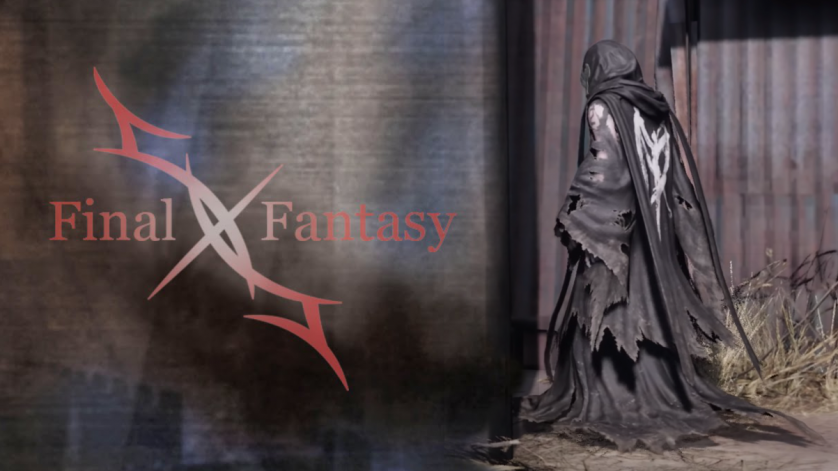
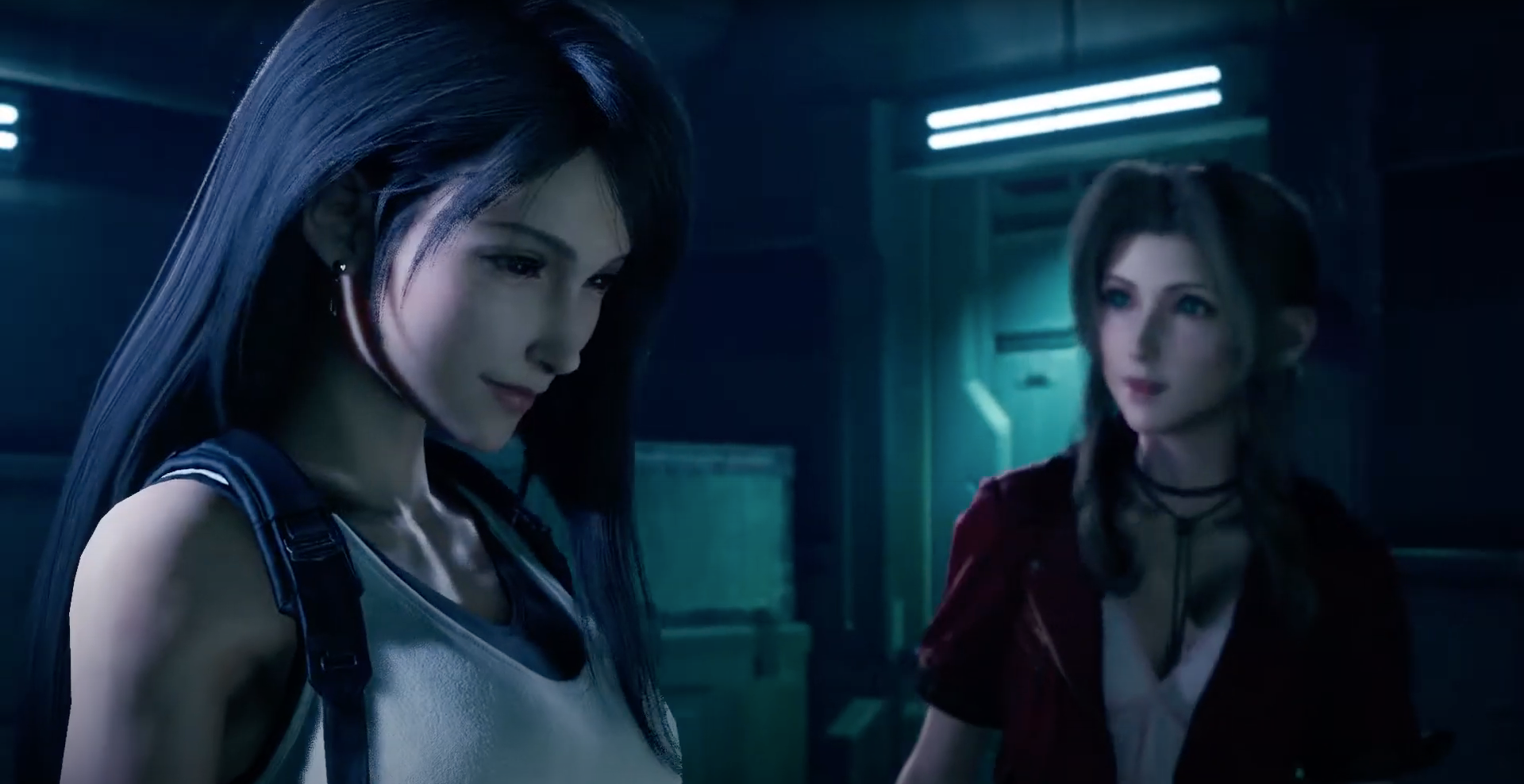
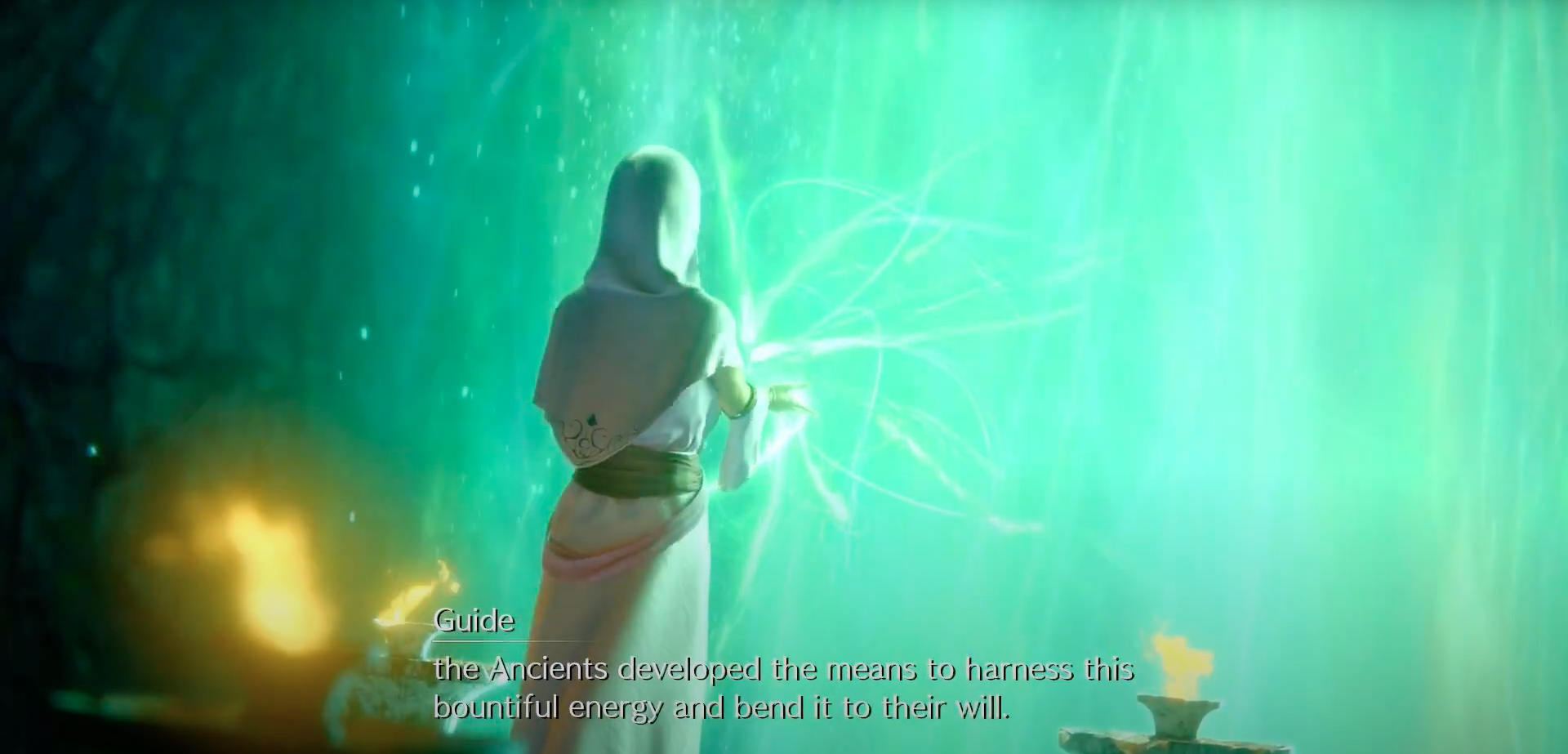
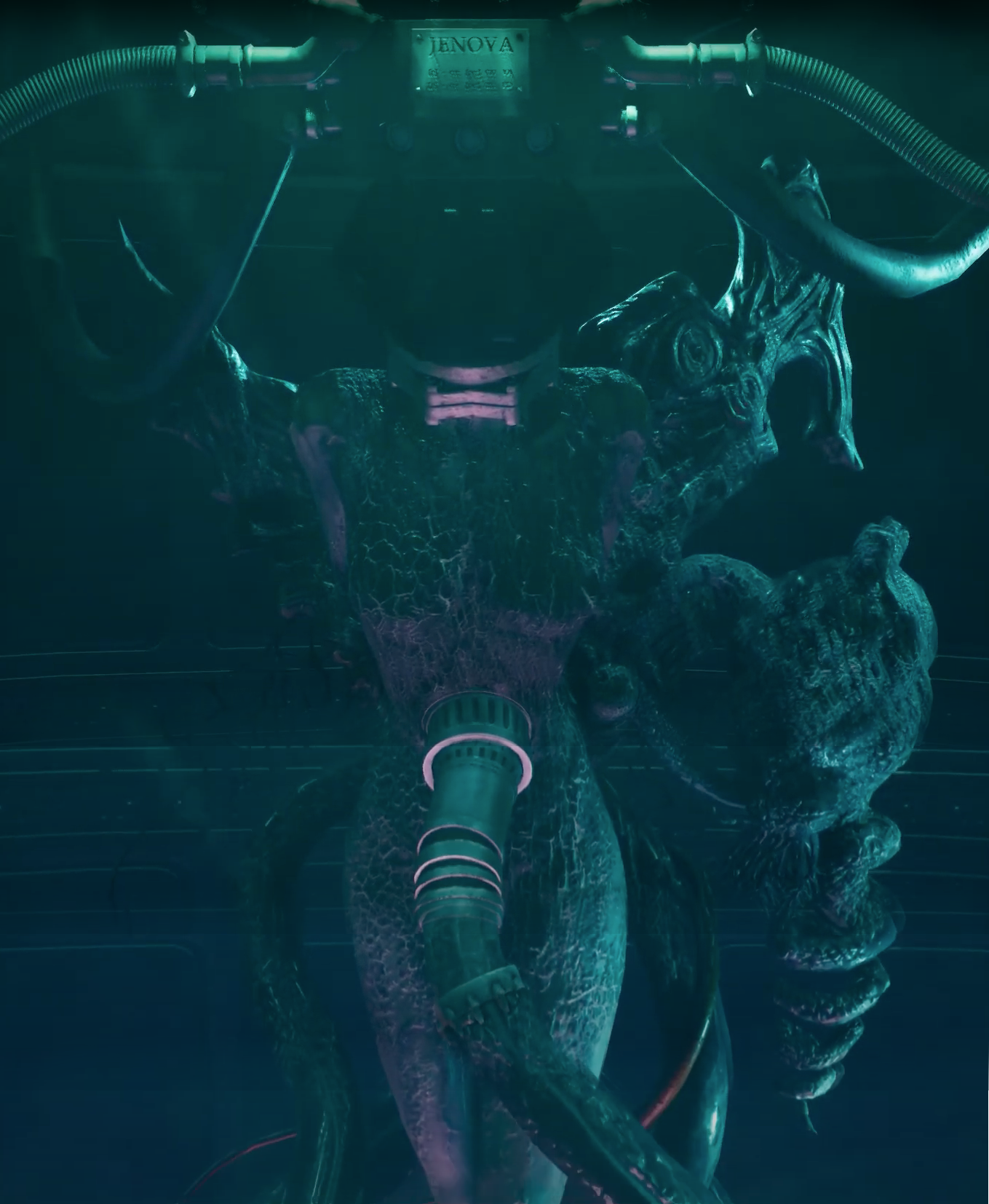
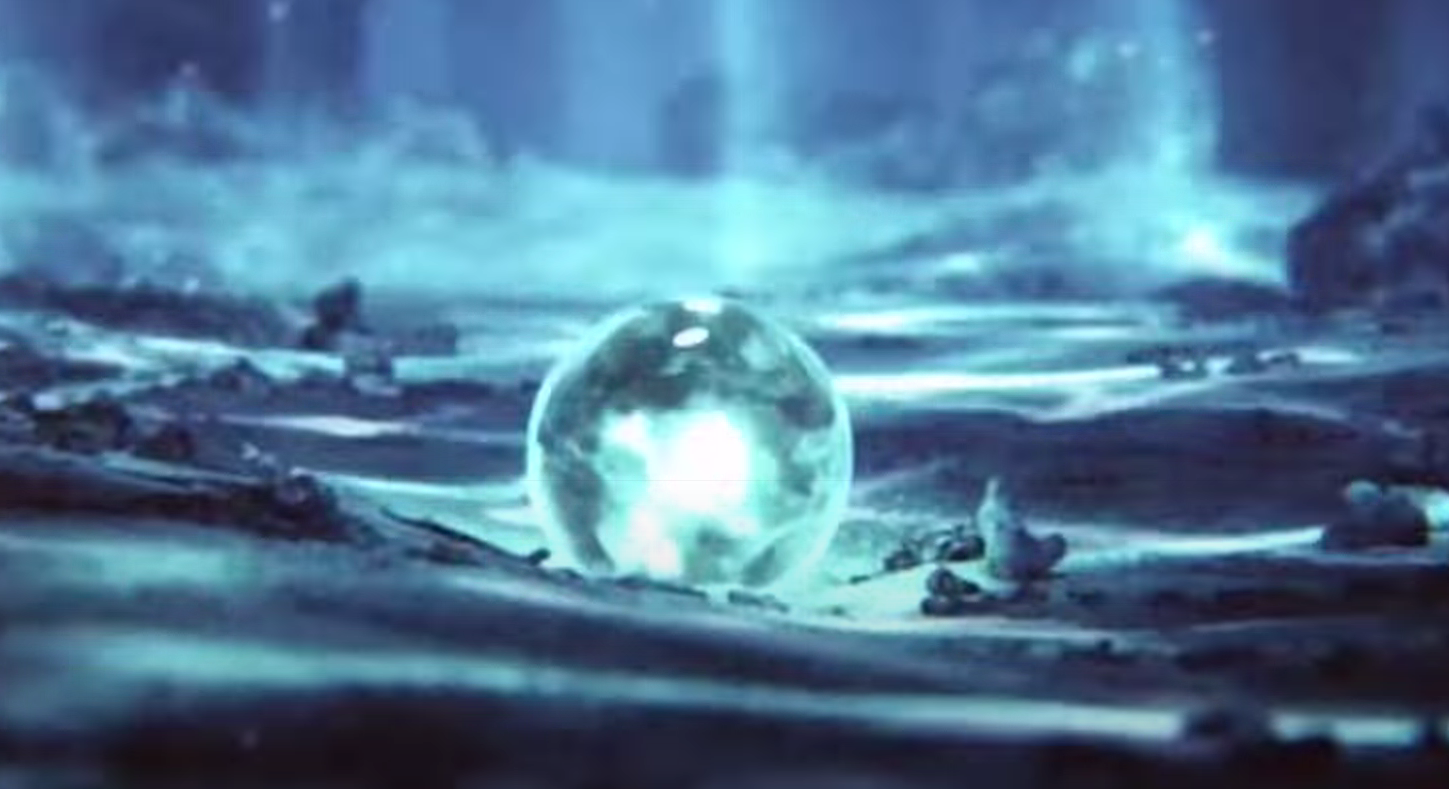

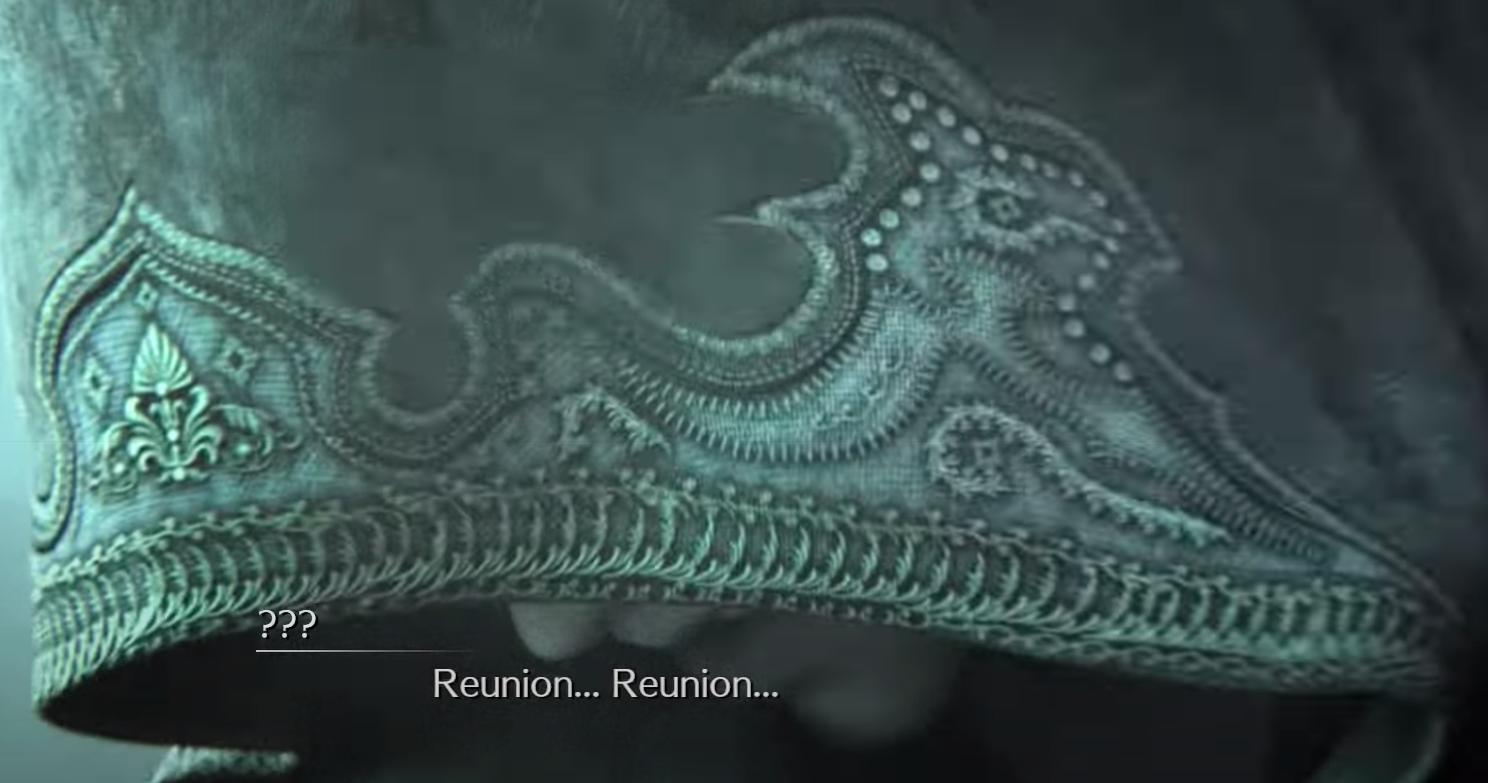
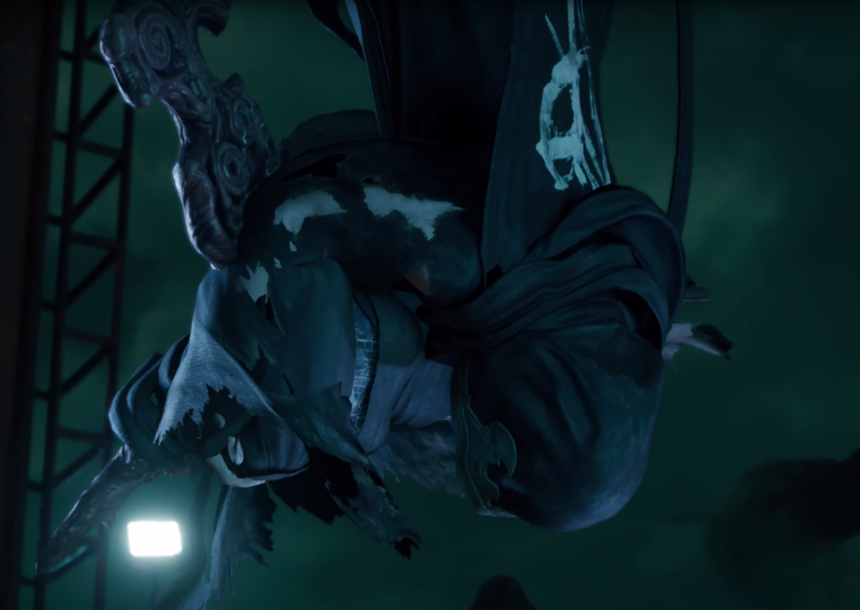
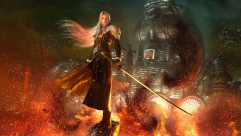
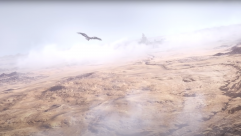
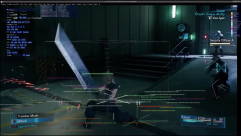

No comments yet
Log in or Register
This is absolutely incredible and I’m sharing it everywhere. Great work X- Soldier.
I’m really glad that you appreciated it, and thanks much for sharing it as well, Schrodingersbabyseal! Hope ya have a good weekend!
Very impressive article as alwyas X-Soldier. Tbh, I still don’t like the whole concept of fate and the meta elements for how overbearing they are. The whispers, specifically, are insanely invasive and not subtle at all. Nonetheless, this was a very interesting read and I especially enjoyed your interpretation of the perspectives of Cloud, Aerith and Sephiroth for the upcoming parts.
Thanks much, X7Strife. Honestly, I felt exactly the same way about them at first, but the more time I’ve spent looking at them, thinking about the original game, and considering what Remake means to the team who’s actually doing it, the more I’ve come to really appreciate what they mean to the story itself. They feel more valuable and less like some slapped on addition to make things new like they did at first.
Fate seems like an odd thing to examine at first, but when you’re talking about life & death… it’s an even more odd thing to ignore. It’s invasive because that’s what it’d be like going back & reliving events you want to change with your whole being, but not being able to. I can’t guarantee that they’ll nail the execution once it’s all said & done, but at this point I feel very confident in what they’re presenting with them & why.
Personally, I’ve found that it’s best not to think of the Whispers as being purely meta concepts – even though they do also serve that purpose in Remake. It helps a lot to view them just like the Planet’s other existing spiritual defense mechanisms like the Weapons & Materia. In the original game they would have been completely invisible to us, since that game just follows the Sefirot’s paths, rather than knowing things about the paths in order to try deviating from them. Everything about what they are matches with the original game in their overt physical presentation, as Final Fantasy VII has never been subtle with the presentation its spiritual concepts once you know what you’re looking at, which is what I wanted to do a lot of in this article.
There’re actually a lot of ways that the Whispers have already been adhering to the in-world mechanics with the the Planet & Shinra’s Science experiments, too. Despite being new and feeling a bit strange, they’re still perfectly aligned with spiritual core of Final Fantasy VII, as well as a lot of the in-game lore as well. I briefly mentioned some of that on Page 7 (in the bit about Stroke II) that I’ve been planning on breaking those things down in a future article, and this is all sort of why I wanted to cover these things first before poking around at some things about the Whispers from a purely in-game-world perspective.
I hope that whenever I get to dive into a bit more detail on them from that perspective that maybe that’ll help ya find them a bit more appealing & less invasive. Either way, I’m glad that you found some things to enjoy from all of this despite not being to hot on the Whispers! Have a good week!
Thank you for this thoroughly researched article!
I’d seen the joke(?) before that David Bowie is in every video game, but this really spells it out as far as Sephiroth. I could never quite get into Bowie’s art rock but now I want to see “The Man Who Fell to Earth”!
I wonder if Seph’s silhouette (fashion-wise) was also inspired by Bowie’s dress + boots for the cover of “The Man Who Sold the World”?
Glad to’ve provided it!
I saw a lot of those while I was doing research, and it was amusing that I was adding yet another example to that list. “The Man Who Fell to Earth” is quite an abstract Sci-Fi film and there’s a ton of nudity in it, but it’s SO very interesting looking at it as something with links to the themes in Final Fantasy VII.
I think that Sakaguchi had some input about Sephiroth’s & Aerith’s designs (they have similar hair because they were initially going to be siblings in the game), but I wouldn’t be too surprised if there were even more Bowie influences than I managed to pick up. 😀
I have to be honest: I did cry in the end.
I’m very sorry for your loss, but knowing that this is what ultimately allowed you to understand more deeply the authors’ intentions and feelings about where they want us to go in the game is inspiring to me. Making us reflect on life, death and our memories, once again, would be the greatest gift they could give us. I really hope you’re right.
It’s amazing what you’ve managed to do. Thank you.
That means a lot to me, so thanks so very much for taking the time to let me know. I did cry several times over the course of doing research & writing this. Additionally, I just learned over the weekend that another friend of mine passed away unexpectedly – and having just written all of this really helped me a lot in processing that, too. I’m working on a semi-companion piece to this one that covers some different but related topics, so I’m hoping it’ll be just as insightful.
Again, thanks for reading through this and letting me know, & I hope that you have a really wondering week!
I haven’t even finished reading this and my mind is already blown. I’ve also been reading the unused dialogues from the OG and man does it give a lot of insight into some of the way remake was done. At least in my opinion. FF7 is my favorite game/story of all time and deep diving into understanding it has been a passion since remake was released. Thank you so much for all this research and concise explanation. I wish i had a friend like you to talk to about all this ff7 passionate stuff, no one around me GETS it.
There was an interview with Kitase in Famitsu that got translated today, and it loosely touched on a couple things I mentioned here in ways that were super satisfying.
I’m glad that you’re enjoying it so far & hope that it carries on with you to the end! I’m slowly working on more, so hopefully that’ll help! It’s a passion that I deeply enjoy, so thanks for taking the time to read & provide extra encouragement for doing this sort of thing!
Hello X-SOLDIER!
I finished the original FF VII a couple of days ago and was really impressed by story, characters and themes of the game and I want to understand more. Unfortunately, I can’t play the Remake right now and I wanted to ask if your whole article has Remake spoilers or I can read some early pages. Or maybe there is some other good article with in-depth analysis of the original game?
Heya literious! I’d very much recommend steering clear of this one for now. There are definitely little bits and pieces of Remake-related information scattered throughout, since the symbol that it’s focused on only appears in Remake.
Really glad that you finished the original though, and you’re more than welcome ta join us on the forums to chat about things there!
In some translations Netzah is pronounced more like Netzach…which would be interesting, since Netzah is broken off from the tree. Remake could be attempting to reestablish his presence.
Just amazing, i’m looking forward for your next analysis!
You bring so much to fans of ffvii like me
thanks and thanks again